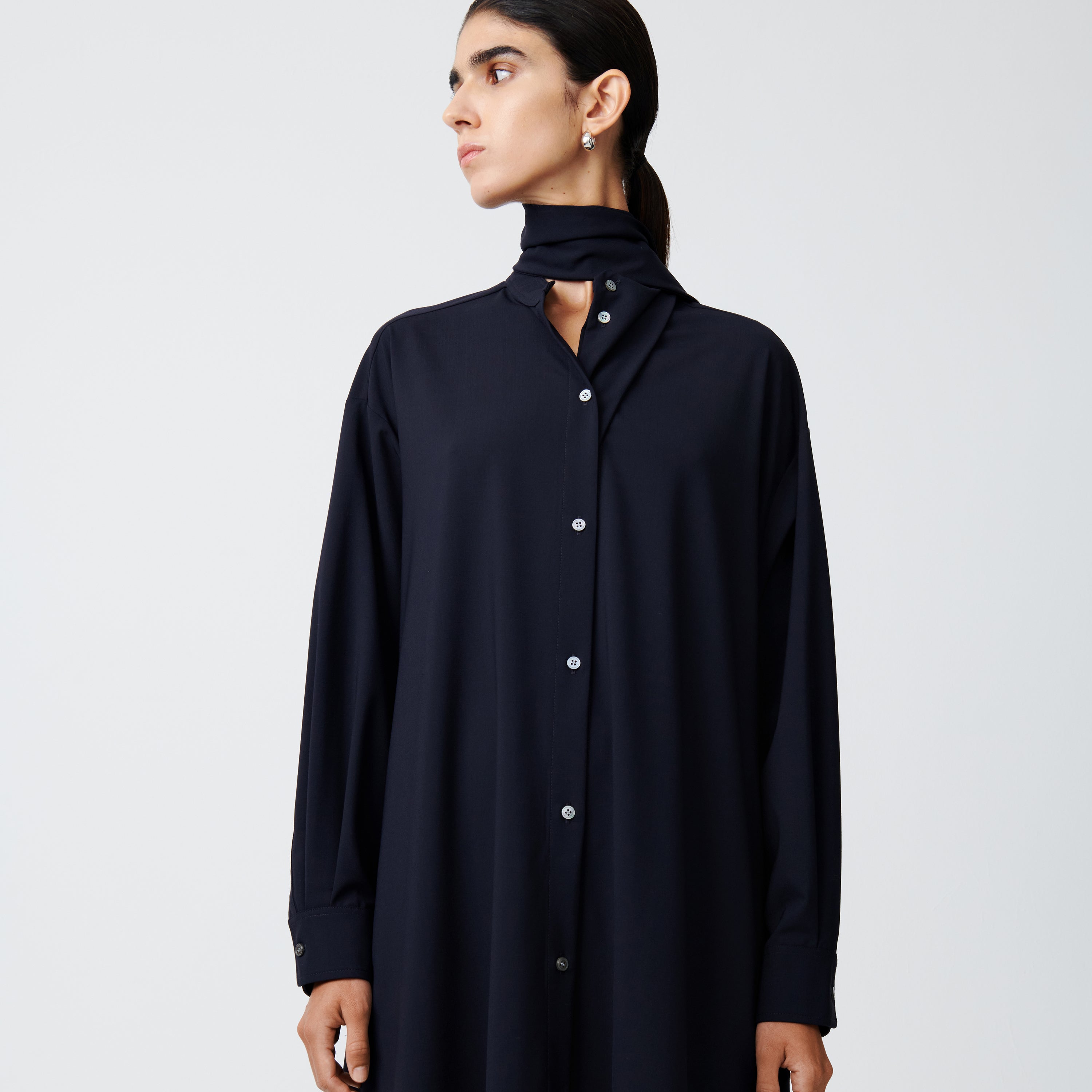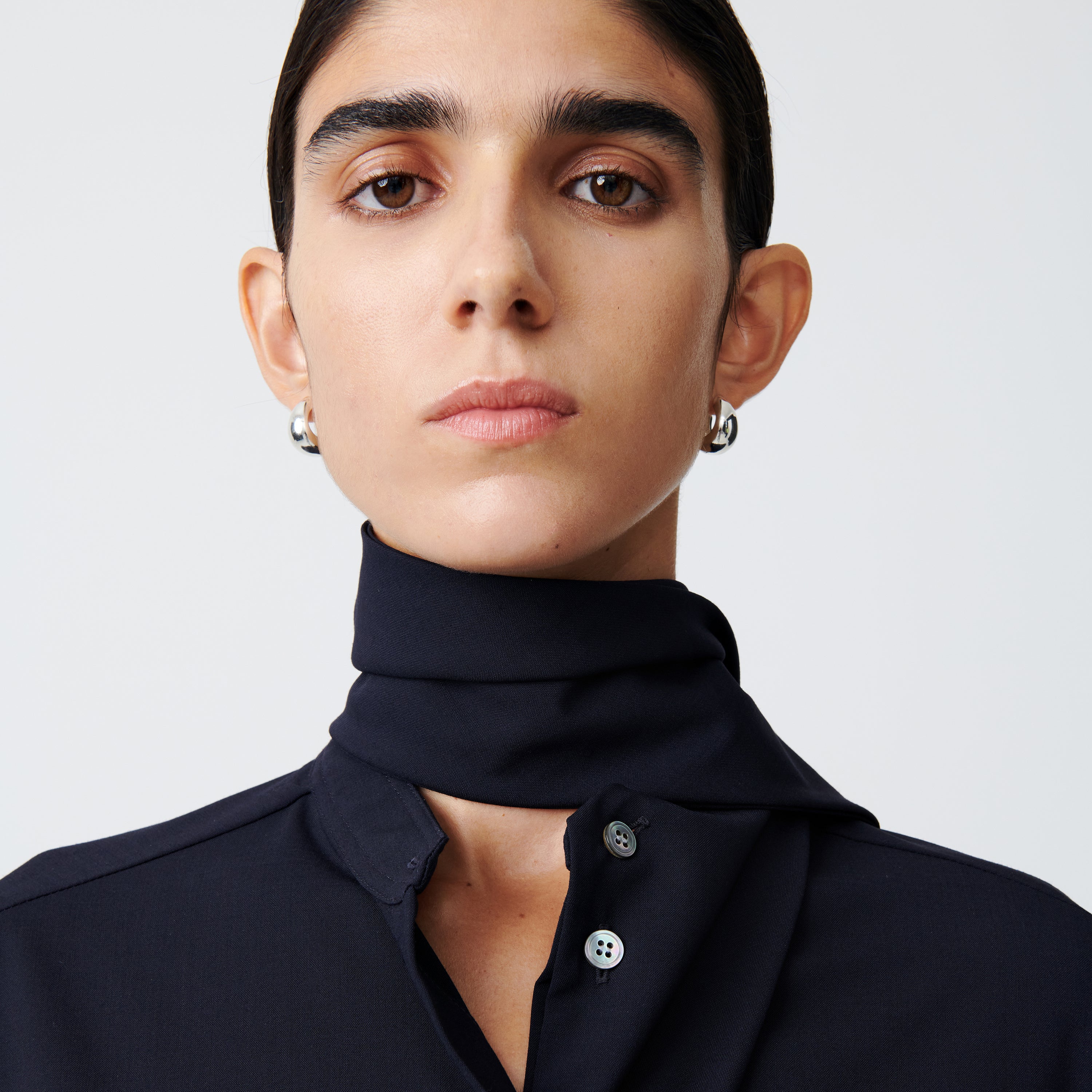

For the second instalment of the Studio Nicholson Talking Senses series, the conversation turns to the phenomenon of synaesthesia. A rare neurological condition that describes the intertwining of the senses, it manifests in a criss-crossing of perception – enabling some synaesthetes to ‘taste’ colour, or ‘see’ sound. With brains that are essentially hard-wired very differently to the ‘average’ person, this unique and gifted sensory bonus scheme is enjoyed by around 4% of the world’s population. It has baffled the boffins for decades, but scientists are finally beginning to understand how genetics could have a significant part to play in the mechanics of this biological, entirely unlearned, extraordinary cognition.
Singer and songwriter Sharleen Spiteri had always assumed her colour-coded experience of listening to music was just part of the creative process – she’d never considered it was atypical until a chance appearance on a television show called, ‘Must Be the Music’, when the conversation turned to synaesthesia. For the first time ever, she was able to externalise and share the remarkable ability that she’d always taken for granted. Over a breakfast Zoom on a balmy June Lockdown morning, I asked Sharleen to unravel the magic behind her technicolour climaxes in the studio and tell me how this idiosyncratic viewpoint has impacted on the way the lives life and makes music with her band, Texas.
Video calls have changed how we’re all operating through the pandemic. Do you think this new tempo is changing our attitude to life?
The world slowing down has allowed us all some time to ask ourselves important questions about the future. It’s an opportunity to siphon out the people who really matter and hold them close. It’s showing us who we can turn to, by making us all realise who we want to share our lives with. Normally, our schedules are so hectic, that there’ll always be those circumstances when something is said, or done, that you’re not entirely happy with – but because we’re so busy, we let stuff slip and our brains are already lurching onto the next thing. Your body and brain seem to say ‘erase, move on’, but then sometimes you’re in bed a few days later, laid there, raging! This pace is teaching us to stop and actually deal with things – which can only be a good thing, right?
How did you first become aware of being one of the world’s ‘Synaesthetes’?
Up until I was diagnosed by a specialist doctor, I’d always just assumed I was some kind of daft hippy – especially when I was recording in the studio with the band. I’d be there working out the chords, trying to perfect a certain part of the song and they’d all be like, ‘Woah – here we go – she’s gonna start describing colours again in a minute!’. I suppose I was thinking everyone was seeing those weird colour auras – I just thought it meant I was very sensitive to sound.
How does it impact your daily life? Does it influence how you make music?
The sensation of touch makes me ‘see’ colour. The same thing happens with sound. So, say you hand me a strip of tinfoil; I’ll immediately see pale icy blue. Then as I start to crinkle it up in my hand, it moves through the blues and turns to green. If I squeeze even harder to crush it and make a small, compact ball, things change again, and I’ll see deep, dark navy and then black.I think this is why as a musician, I’ve always been drawn to soul music more than any other genre. Sure, I love Kraftwerk. Clipped, clean and definite with cold colours on the spectrum, but swop that for Marvin Gaye and honestly, I’ll see a rainbow. When I’m working through a track it’s a colour chart journey. With my hand to the page writing songs I’m planning how each verse is one colour, the bridge is another – all of it building up to a place where everything really intensifies. Everything joins up, physically, mentally, emotionally, so that when I’m performing onstage, I’m using the synaesthesia to lead the audience into something, preparing them for what’s coming – guiding them with my voice to the big colour explosion of the chorus.
With upwards of 40million record sales, can you talk about how you made the transition from hairdresser to internationally acclaimed singer and songwriter?
If it wisnae for me walking past a trendy hair salon in Glasgow and spotting the staff wearing these amazing Katherine Hamnett boilersuits, I might never have become a hairdresser. This was the 80s when I was 14. I walked in, asked them if they needed any Saturday Girls, and started almost immediately. Everyone working there was so interesting, all of them were really into music. I was a right little smart arse, I loved it – and ended up working all the fashion shows, travelling to New York, Italy, all over the place.
Then, when 18 and I’d just started at the Glasgow School of Art, I met Jonny [McElhone]. He’d heard me sing and asked if I could write songs and I just said, “Yeah”. What he didn’t realise, was that I was just like all the other arty teenagers, I’d written some shit poetry in my bedroom – but I had the right attitude and he believed in me, which made me feel comfortable about giving it a go. He’d already been in two successful bands (Altered Images and Hipsway) so I gave the art route a miss and we formed Texas. I found out a while back, that my mum had kept my report cards from school, and in one of them my English teacher had written, “Sharleen has no understanding of language.” Funny then, that I ended up a songwriter.
What makes me so happy about Texas, is that together we’ve ridden the road to success, but we’ve always been able to adapt and ride the road that’s in front of us. You can’t always be ‘up’ because naturally, things drop occasionally and it’s about how you strive to cross the bridge and rise again. The first top ten single is easy – because you’ve got nothing to compare it to; but to stay relevant is harder – you need to nurture your art and continue to work your bollocks off.
At the end of a tour, when you hang up your mic for a well-earned rest, what makes you happy? How do you wind down and relax?
I’m happiest on stage, but when I’ve been away on the road for months, I like to get back to my home comforts. It’s my safe haven where the pace can really slow down. To be honest, I’ve been trying to simplify my life for a good few years, getting back to basics with what I love. Whether that’s beautifully designed, simple furniture, architecture, clothes, anything. For me it’s always good quality and the finer details that makes something stand out. I know these things might be that little bit more expensive, but in the long run, if you don’t invest in the best, you’ll end up buying 5:1.
I want things that last. That’s how Studio Nicholson slots into my life, and my wardrobe. All the things I stand by; good quality, craftsmanship, timelessness and ease. Above all though, clothes have to feel comfortable to work. Maybe it’s my synaesthesia, but I’ve always been sensitive to fabric, always felt very aware of how something actually feels on my skin. You can be busy doing something and just catch a glimpse of a button, or a seam, and stop for just a second to see that it’s something so well done. Everything – all the hard work and talent that goes into designing and making it. Her clothes make me feel good about life, and good about me.
-
Leanne Cloudsdale is the Studio Nicholson Editor-at-Large


